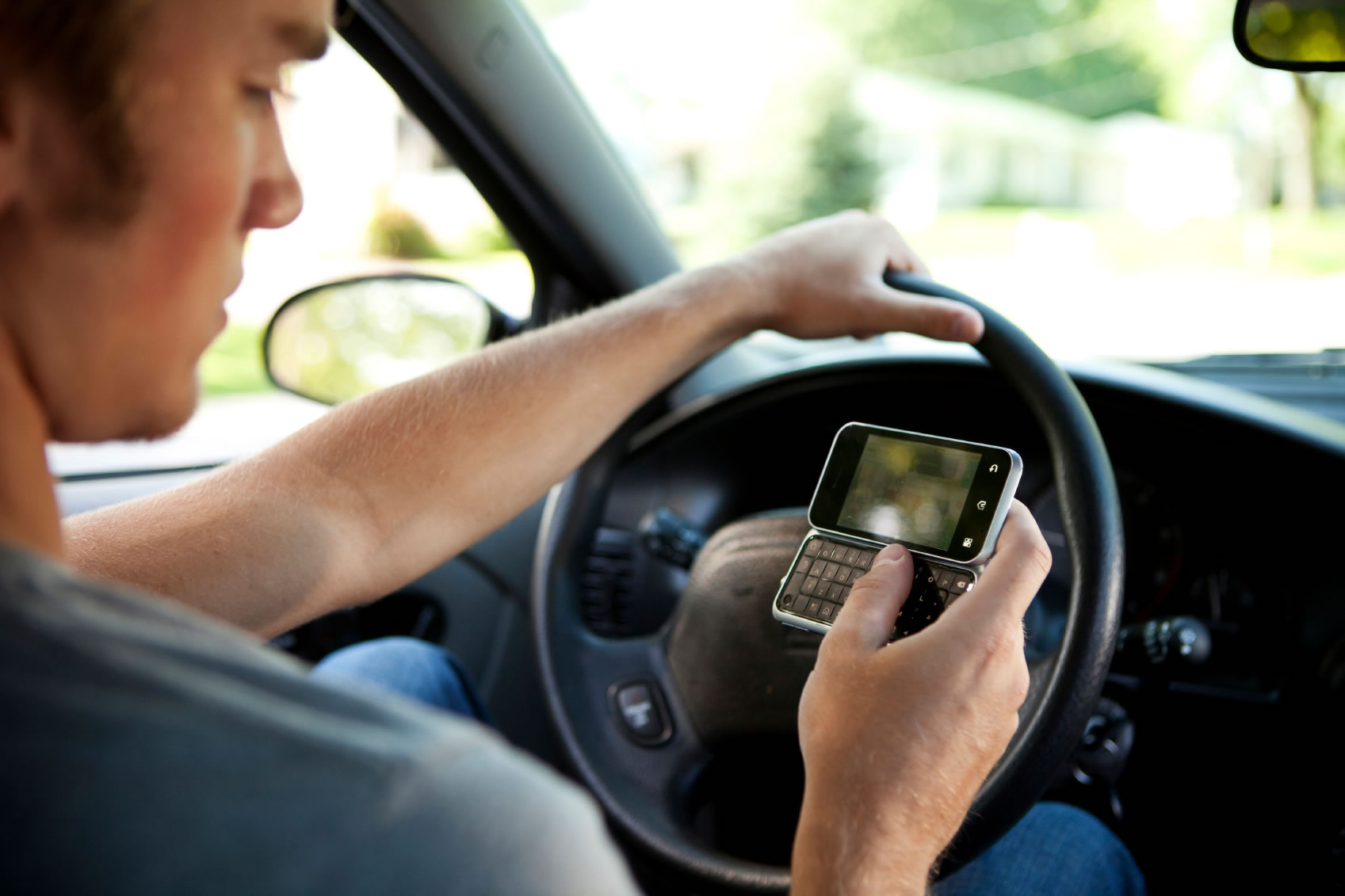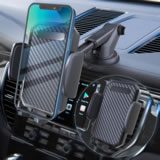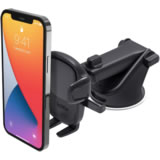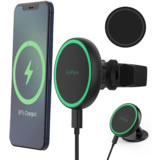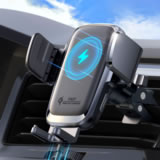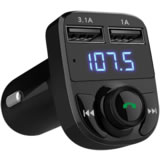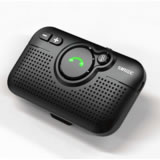California Distracted Driving & Cellphone Usage Laws
We’ve all been there: we’re driving, and suddenly our mobile phone rings. Sometimes it’s hard to resist the temptation to answer it, but there are laws prohibiting the usage of cell phones while driving in California unless they’re used in hands-free mode.
Special note: California made no changes to Distracted Driving laws in recent years. All restrictions and penalties are the same as before. There are some false clickbait articles on Facebook posts claiming otherwise.
Using mobile phones while driving is regulated by California Vehicle Code, Division 11: Rules of the Road, Chapter 12: Public Offenses, Article 1: Driving Offenses; Sections 23123 to 23125.
California Distracted Driving laws summary:
- In California drivers are not allowed to use mobile phones for calling, nor reading or writing text messages while driving on a public road.
- Drivers may use cell phones for texting or calling in case they have a hands-free system installed.
- All drivers under the age of 18 are prohibited from using phones even with a handsfree system.
Without hands-free capability, California laws permit you to legally use mobile phones while driving only when on private property, or in case of an emergency call to law enforcement or other similar service.
California’s definition of a hands-free system states that a phone must be mounted on windshield or dashboard in a way that doesn’t hinder the driver’s view of the road, and the driver’s hand must be able to activate or deactivate it with a single swipe or tap.
You can review our Windshield Sticker Laws and Cracked Windshield Laws to see what the law considers obstructed view of the road.
You can find phone mounts for cars for less than $20, making it a very cheap investment compared to paying for traffic tickets.
See the law excerpts below for further clarification.
California Vehicle Code, Section 23123:
(a) A person shall not drive a motor vehicle while using a wireless telephone unless that telephone is specifically designed and configured to allow hands-free listening and talking, and is used in that manner while driving.
(b) A violation of this section is an infraction punishable by a base fine of twenty dollars ($20) for a first offense and fifty dollars ($50) for each subsequent offense.
(c) This section does not apply to a person using a wireless telephone for emergency purposes, including, but not limited to, an emergency call to a law enforcement agency, health care provider, fire department, or other emergency services agency or entity.
(d) This section does not apply to an emergency services professional using a wireless telephone while operating an authorized emergency vehicle, as defined in Section 165, in the course and scope of his or her duties.
(e) This section does not apply to a person driving a schoolbus or transit vehicle that is subject to Section 23125.
(f) This section does not apply to a person while driving a motor vehicle on private property.
California VC, Section 23123.5:
(a) A person shall not drive a motor vehicle while holding and operating a handheld wireless telephone or an electronic wireless communications device unless the wireless telephone or electronic wireless communications device is specifically designed and configured to allow voice-operated and hands-free operation, and it is used in that manner while driving.
(b) This section shall not apply to manufacturer-installed systems that are embedded in the vehicle.
(c) A handheld wireless telephone or electronic wireless communications device may be operated in a manner requiring the use of the driver’s hand while the driver is operating the vehicle only if both of the following conditions are satisfied:
(1) The handheld wireless telephone or electronic wireless communications device is mounted on a vehicle’s windshield in the same manner a portable Global Positioning System (GPS) is mounted pursuant to paragraph (12) of subdivision (b) of Section 26708 or is mounted on or affixed to a vehicle’s dashboard or center console in a manner that does not hinder the driver’s view of the road.
(2) The driver’s hand is used to activate or deactivate a feature or function of the handheld wireless telephone or wireless communications device with the motion of a single swipe or tap of the driver’s finger.
(d) A violation of this section is an infraction punishable by a base fine of twenty dollars ($20) for a first offense and fifty dollars ($50) for each subsequent offense.
(e) This section does not apply to an emergency services professional using an electronic wireless communications device while operating an authorized emergency vehicle, as defined in Section 165, in the course and scope of his or her duties.
(f) For the purposes of this section, “electronic wireless communications device” includes, but is not limited to, a broadband personal communication device, a specialized mobile radio device, a handheld device or laptop computer with mobile data access, a pager, or a two-way messaging device.
California VC, Section 23124:
This section of California Vehicle Code prohibits the use of communication devices even in hands free mode for drivers under 18.
(a) This section applies to a person under the age of 18 years.
(b) Notwithstanding Sections 23123 and 23123.5, a person described in subdivision (a) shall not drive a motor vehicle while using a wireless telephone or an electronic wireless communications device, even if equipped with a hands-free device.
(c) A violation of this section is an infraction punishable by a base fine of twenty dollars ($20) for a first offense and fifty dollars ($50) for each subsequent offense.
(d) A law enforcement officer shall not stop a vehicle for the sole purpose of determining whether the driver is violating subdivision (b).
(e) Subdivision (d) does not prohibit a law enforcement officer from stopping a vehicle for a violation of Section 23123 or 23123.5.
(f) This section does not apply to a person using a wireless telephone or a mobile service device for emergency purposes, including, but not limited to, an emergency call to a law enforcement agency, health care provider, fire department, or other emergency services agency or entity.
(g) For the purposes of this section, “electronic wireless communications device” includes, but is not limited to, a broadband personal communication device, specialized mobile radio device, handheld device or laptop computer with mobile data access, pager, and two-way messaging device.
California VC, Section 23125:
The following section prohibits use of mobile phones for drivers of school buses or transit vehicles.
(a) A person may not drive a schoolbus or transit vehicle, as defined in subdivision (g) of Section 99247 of the Public Utilities Code, while using a wireless telephone.
(b) This section does not apply to a driver using a wireless telephone for work-related purposes, or for emergency purposes, including, but not limited to, an emergency call to a law enforcement agency, health care provider, fire department, or other emergency service agency or entity.
(c) Notwithstanding any other provision of law, a violation of subdivision (a) does not constitute a serious traffic violation within the meaning of subdivision (i) of Section 15210.
Penalties
Penalties for mobile phone use while driving are considered an infraction, punishable with a $20 fine for a first offense, and $50 fine for each subsequent offense. Furthermore, you will have to pay fines for penalty assessment, which can increase your total fine to $60 – $150.
It’s a proven fact that using a phone during driving can be very distracting for the driver. You should always avoid doing it. It has been proven many times that calling or texting while driving increases the chances of getting into an accident significantly.
Purchasing a hands-free system is very inexpensive and can help you avoid getting cited for breaking these simple yet important Distracted Driving laws. More importantly using a Bluetooth or other hands free device is significantly safer for you and others. Bluetooth headset or earpiece can easily be purchased for the price of one citation.
References and sources:
- CA Vehicle Code, Division 11: Rules of the Road, Chapter 12: Public Offenses, Article 1: Driving Offenses (see Sections 23123 to 23125)
